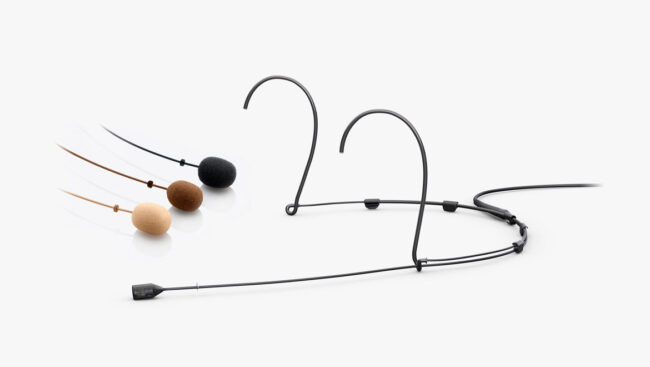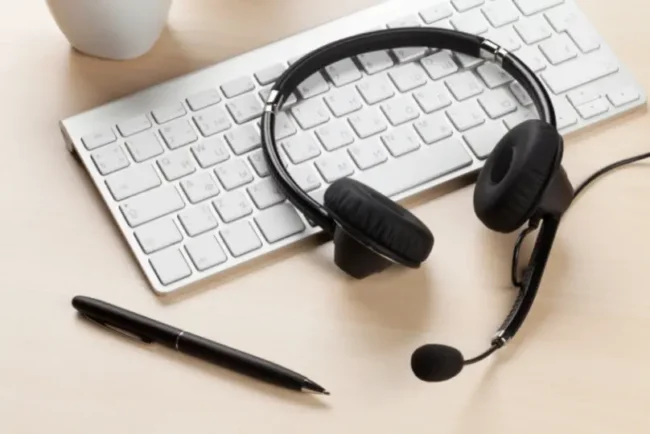As the popularity of online communication, streaming, and gaming continues to rise, so has the demand for high-quality headset microphones. Whether you are a beginner looking to purchase your first headset microphone or a seasoned pro looking for an upgrade, there are several key factors that you should consider before making your purchase. In this beginner’s guide, we’ll explore what to look for when buying a headset microphone to ensure you make the best choice for your needs.
Microphone Type

There are two main types to choose from when it comes to headset microphones: condenser and dynamic. Condenser microphones are more sensitive and offer a wider frequency response. This makes them a popular option for professional use, such as studio recording. On the other hand, dynamic microphones are a less sensitive option. However, they tend to be more durable and less prone to feedback. This makes then an ideal choice for outdoor use and live performances.
A condenser microphone is the way forward for most beginners. This is because they offer better sound quality and more versatility. However, if you plan to use your microphone in a noisy environment or for outdoor activities, a dynamic microphone is worth considering.
Microphone Polar Pattern
A microphone’s polar pattern refers to its sensitivity to sound from different directions. There are three types of polar pattern: cardioid, omnidirectional, and bidirectional.
A cardioid microphone is the most common type. These microphones pick up sound coming from the front and reject any sounds coming from the rear or sides. This makes them a good choice for recording vocals or instruments in a studio setting. On the other hand, an omnidirectional microphone picks up sound from all directions and are best used for recording group performances or ambient sound. Bidirectional microphones or figure-8 microphones pick up sounds from the front and rear of your microphone while rejecting sound from the sides. They are an ideal choice for recording interviews or duets.
When choosing a microphone, consider the type of recording that you do most often, and find the polar pattern that best fits your needs.
Microphone Frequency Response
A microphone’s frequency response is the range of frequencies that it can reproduce. For vocal recording, for example, a microphone with a frequency response of 80 Hz to 15 kHz is typically sufficient. However, if you want to use the microphone to record instruments or higher-pitched vocals, you might want to consider one with a wider frequency response.
It’s important to be aware that while a wider frequency response may sound impressive, it does not always mean better sound quality. A microphone with a flat frequency response will reproduce sound more accurately compared to one with a boosted or scooped frequency response.
Microphone Sensitivity

The sensitivity of a microphone refers to how efficiently it can convert sound into an electrical signal. A more sensitive microphone will require less amplification and can pick up quieter sounds, while a less sensitive microphone will require more amplification and may be more prone to feedback.
Consider the environment that you will be recording in when choosing a microphone and choose a sensitivity level that best fits your needs. If you will be recording in a noisy environment, a less sensitive microphone may be a better choice.
Microphone Impedance
Impedance refers to the electrical resistance of the microphone’s output. When choosing a microphone, its crucial to look for one with an impedance level that is compatible with your recording equipment. Most modern recording equipment has an input impedance of around 1,000 ohms, so choosing a microphone with an impedance of around 200-600 ohms is generally the best option.
Microphone Connectivity
When it comes to connectivity, there are two main types of headset microphones: wired and wireless. Wired microphones offer a reliable connection option and tend to be less expensive in comparison with wireless options. However, they can be more restrictive when it comes to mobility and may limit your range of motion while performing or recording.
On the other hand, a wireless microphone offers more freedom of movement, and can be a good choice for a streamer or performer who needs to move around while recording. However, along with being costlier, they can also be more prone to interference or dropouts if not set up correctly.
When choosing the right microphone for you, consider your recording or performing needs and choose the connectivity option that suits best.
Microphone Comfort and Fit

Since you will likely be wearing your headset microphone for extended periods of time, it’s crucial to choose one that is comfortable and fits you well. Look for a microphone headset that comes with adjustable headbands or ear cups to ensure a snug fit. You may also want to consider a lightweight microphone that will help with minimizing discomfort or fatigue.
Microphone Durability
Consider the durability of the microphone that you choose. Since headset microphones are often used for outdoor activities or live performances, it’s important to choose one that can withstand wear and tear. Look for a microphone that is made from high-quality materials and has a sturdy construction.
Microphone Brand and Reputation
When it comes to audio equipment, brand reputation can be one of the best indicators of quality. Look for a brand that is known for producing high-quality audio equipment, such as those available at Galaxy Audio, with a good reputation among professionals and consumers alike.
Microphone Accessories
Depending on your unique needs, you may want to consider purchasing some accessories to go along with your microphone. For example, a pop filter can be an ideal way to reduce unwanted popping sounds when recording vocals. Or, you may want to use a shock mount, which can help to reduce unwanted vibrations and handle noise. A windshield or “dead cat” can be used to help reduce wind noise when recording sound outdoors. It’s also worth looking for a microphone that comes with a carrying case or storage bag, for additional protection.
Buying a headset microphone can get overwhelming, with so many options to choose from. But by knowing which important factors to consider before you choose, you can put yourself in a better position to make an informed decision and pick a headset microphone that meets both your needs and budget. With the right headset microphone, you can achieve high-quality sound recording and performances that meet expectations.
